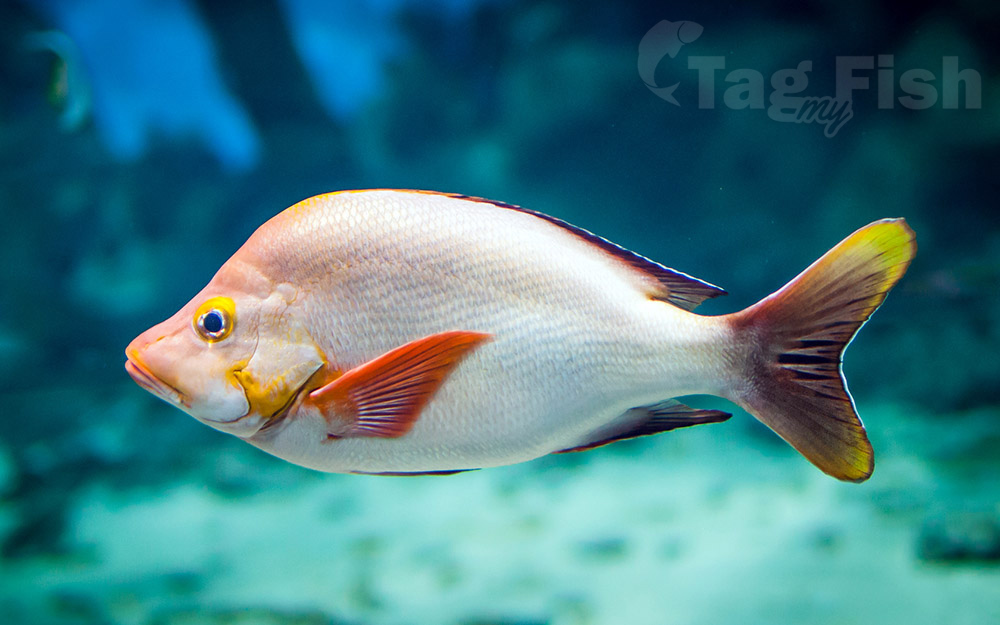Humpback red snapper
(Lutjanus gibbus)

Classification
General data
The humpback red snapper (Lutjanus gibbus), the paddletail, paddletail snapper or hunchback snapper, is a species of marine ray-finned fish, a snapper belonging to the family Lutjanidae. It has a wide Indo-West Pacific distribution.
Description
Humpback red snapper has a body which is relatively with a standard length which is 2.2 to 2.5 times its depth, with a head which has a very steeply sloped forehead a well developed known and notch in the preoperculum. The vomerine teeth are arranged in a crescent shaped patch with no rearwards extension and the tongue is smooth, lacking any teeth. The dorsal fin has 10 spines and 13-14 soft rays while the anal fin contains 3 spines and 8 soft rays. The rear part of the dorsal and anal fins are pointed in shape. The pectoral fins contain 16 to 17 rays and the caudal fin is forked with rounded lobes.
This fish attains a maximum total length of 50 cm (20 in), although 45 cm (18 in) is more typical.
The overall colour of this snapper is red or grey, darker on back and upper head. There is an orange tint on the lower part of gill cover and on the axil of the pectoral fin. The fins may be red but the median fins are normally dark brown to blackish with the soft-rayed part of the dorsal fin, the anal fin and the caudal fin having a thin white margin. The juveniles have a sizeable circular black spot at base of caudal fin.
Distribution and habitat
Lutjanus gibbus has a wide Indo-West Pacific distribution. It ranges from the eastern African coast and the Red Sea to the Society and Line islands and from Australia in the south to southern Japan in the north. It has also been recorded from the Marquesas and south to Rapa Iti. In Australia it is found from Houtman Abrolhos to the Dampier Archipelago and reefs off the northern coast of Western Australia, the Ashmore Reef in the Timor Sea the on the eastern coast from the outer Great Barrier Reef and Coral Sea reefs south to Moreton Bay in Queensland with juveniles occurring south to Sydney.
The humpback red snapper occurs at depths from 1 to 150 m (3 ft 3 in to 492 ft 2 in). It is associated with reefs and during the day gathers in large, mostly stationary aggregations on coral reefs. The juveniles shelter in beds of sea grass in protected areas of Sandy and muddy substrates, while the aggregations are dominated by subadults. The larger adults inhabit deeper waters on coastal slopes.











